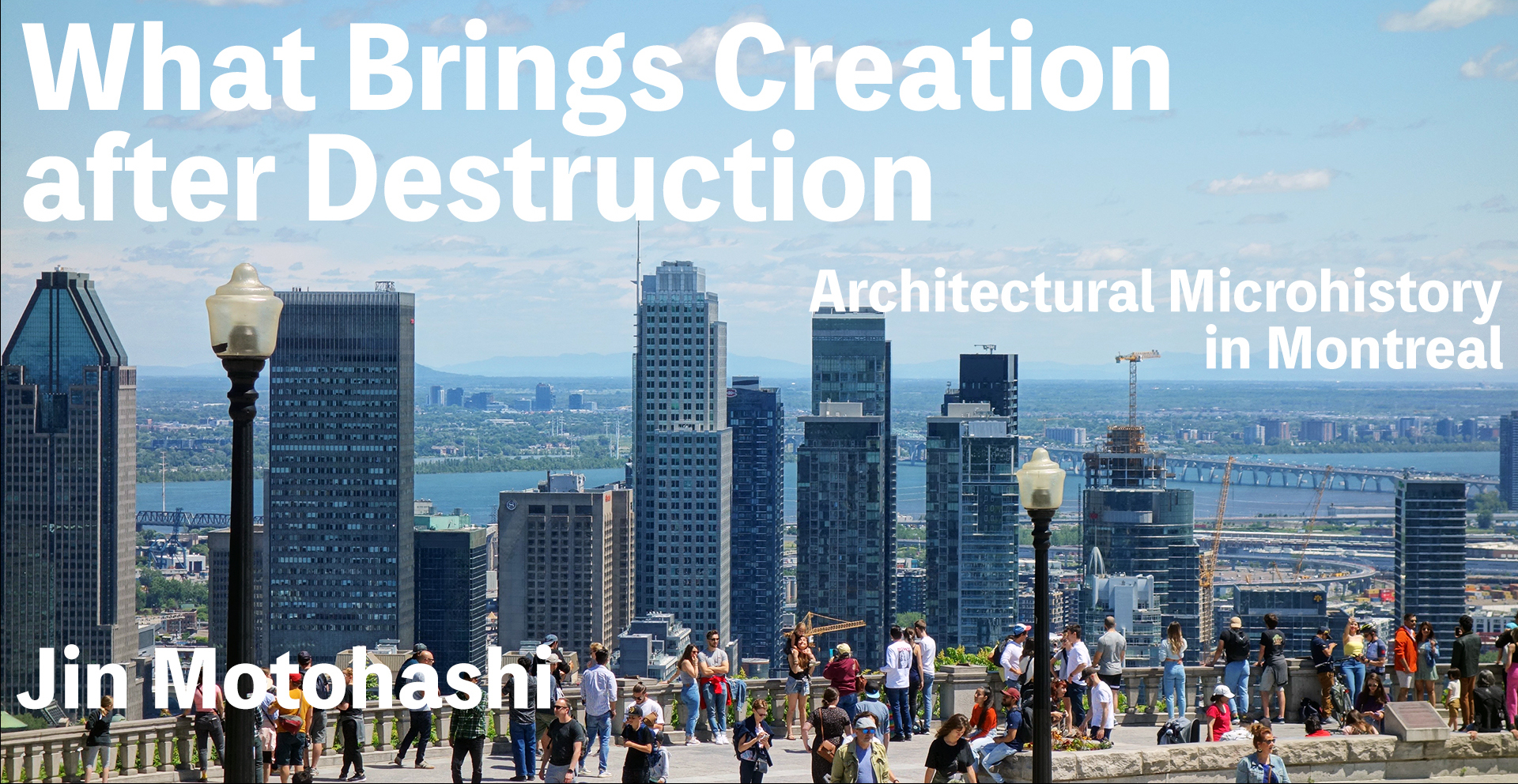Montreal has been growing continuously since the World Expo and the Olympic Games held in the 1960s and 1970s, while at the same time, the city has been destroyed. On the other hand, there is also a history of resistance to such modernization. In this series, Jin Motohashi, an architectural historian and Montreal resident, will report from Montreal on the city’s landscape, housing conditions, and relationship with the arts.
The first in the series will start from the Atwater station.
Recorded at a park in front of Atwater Station.
Location: 45°29’22.5″N 73°35’01.2″W
Date: November 2, 2022
Black Box at Atwater
The first place we lived was near Atwater Station. On March 17, 2022, our Montreal life started on an unseasonably warm day. We found a temporary housing on Airbnb because of its proximity to my workplace, the Canadian Center of Architecture. The province of Quebec, where Montreal is located, is sometimes called “The Paris of North America” due to its French-speaking population and the cityscape of the historical city. However, when we arrived here in March, the city was still gloomy as if it had not yet awakened from hibernation. There was dust in the air from the construction of roads and high-rise buildings (after living there for half a year, I recognized that road construction is part of Montreal’s adorable character).
At the Atwater station, I realized there was a large black building next to the crowded complex building, with two big steel beams overhanging the roof. It was colored black on the outside, including these beams. What is this building? The only sign visible from the outside was the orange sign of A&W, a hamburger shop occupying the first floor. But I didn’t investigate that at the time.
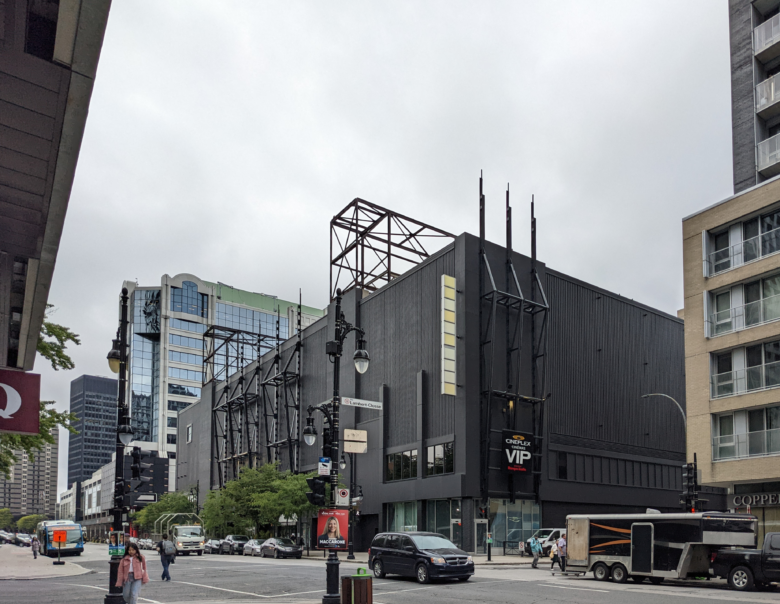
Black Box that sits next to the Atwater station.
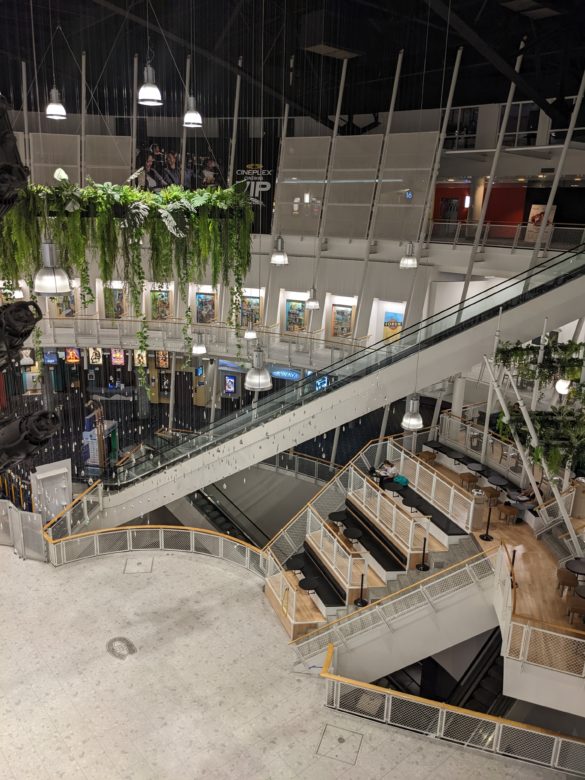
Sneaking into the black box, there was a large space.
Montreal Forum
“The atmosphere here in Atwater has changed a lot in these 20 years,” my colleague told me over lunch. His words solved the mystery of this black building. He told me it used to be an ice hockey rink. Moreover, it was the home rink of the famous Montreal Canadiens. Ice hockey is probably the most popular sport in Canada. The Canadiens are exceptional against the other clubs even today. This building was known as Montreal Forum; it opened in 1924 and was repeatedly remodeled, used not only for hockey but also for many different events, sports games, etc. The large structure, visible from the outside, was designed to materialize an ample space with no columns.
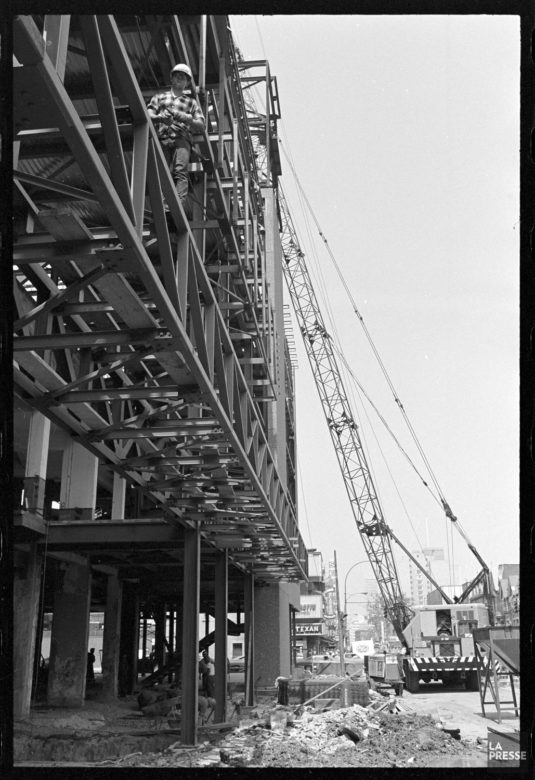
The Montreal Forum undergoing renovation in 1968.
Huge beams were being lifted by a crane.
Bibliothèque et Archives nationales du Québec (BAnQ), Fonds La Presse
Montreal Forum has a history familiar to the Japanese collective memory because this was the hall where the gymnastics competition at the 1976 Montreal Olympic Games was held. Gymnastics legends such as Sawao Kato and Mitsuo Tsukahara won the gold medal in the team competition, while the brilliant feat of Nadia Comaneci of Romania winning three gold medals for the first time in history with a perfect score of 10 points may be even more unforgettable for the Japanese people. This black box has a great history. Whatever the catalyst, there is always an unexpected discovery that connects to our interests if you dig deeper into the history.
Nadia Comaneci – First Perfect 10 | Montreal 1976 Olympics
The Montreal Forum closed its doors in 1996. The Canadiens moved their home rink to the Bell Center near Central Station. It is easy to imagine that this place eventually lost its pulling power. The remaining building was converted into a movie theatre, and a part of the rink was preserved. The black box carried Montreal’s history. “But the Atwater is changing again,” my colleague told me. Across the park from the Montreal Forum, a series of new high-rise apartments are under construction on the site where the hospital building was demolished. Atwater will change again when construction is complete.
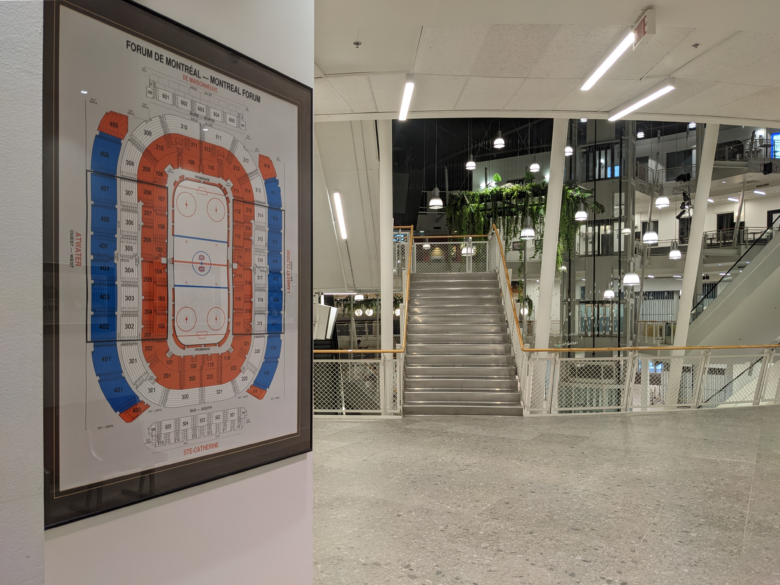

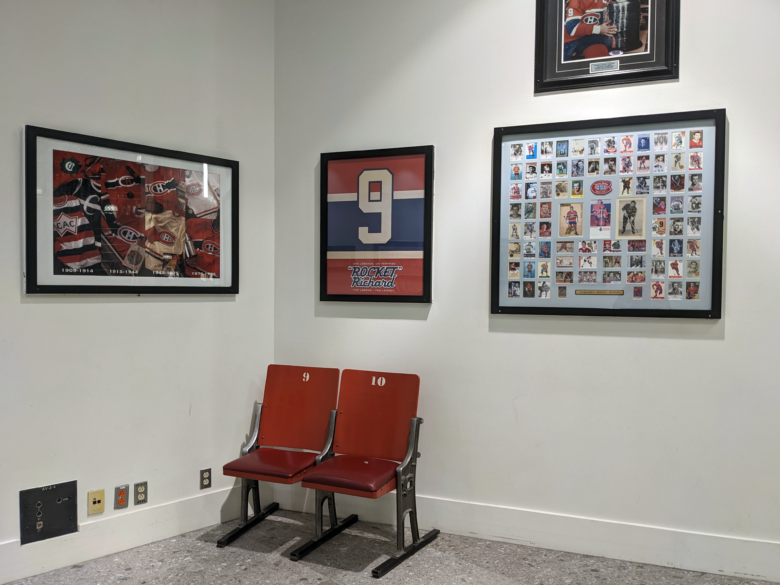 Numerous goods on display in various locations, remind us of the history of the Montreal Forum.
Numerous goods on display in various locations, remind us of the history of the Montreal Forum.
Long Time, Short Changes
From a macroscopic view, Montreal is a historic city that retains an old atmosphere, but contrary to this image, the town has always changed microscopically. The demolition site of an old house taught me that.
I go to a supermarket called Supermarche PA. The prices are low, but the products are good. So, in the evening, the shop is crowded with many people who finish their work and go home. I noticed the tiny brick house beside the store was being demolished. It is not rare to see demolition sites here, but when I saw one side of the building left standing, the sight overlapped with a memory I had from Kyoto.
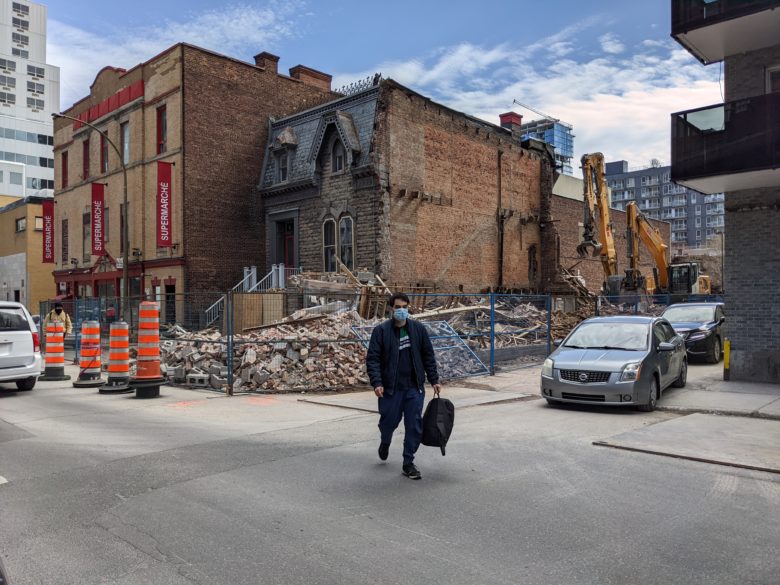
An architectural demolition site that I came across in the city of Montreal.
For the author who has studied bricks, it is interesting in many aspects.
Before coming here, I was in Kyoto for five years. In Kyoto, about 800 old townhouses, called machiya, are torn down each year. In anticipation of inbound visitors, developers are demolishing machiya to build new hotels. It is ironic that the historical buildings continue to be destroyed for the sake of the people who visit to see them. It is not uncommon to see cars carrying materials from machiya that have just started to be demolished. Whenever I encountered this situation, I resented myself for not doing anything. As an architectural historian, I am angry about this. On the other hand, I tell myself that they cannot escape the economic logic.
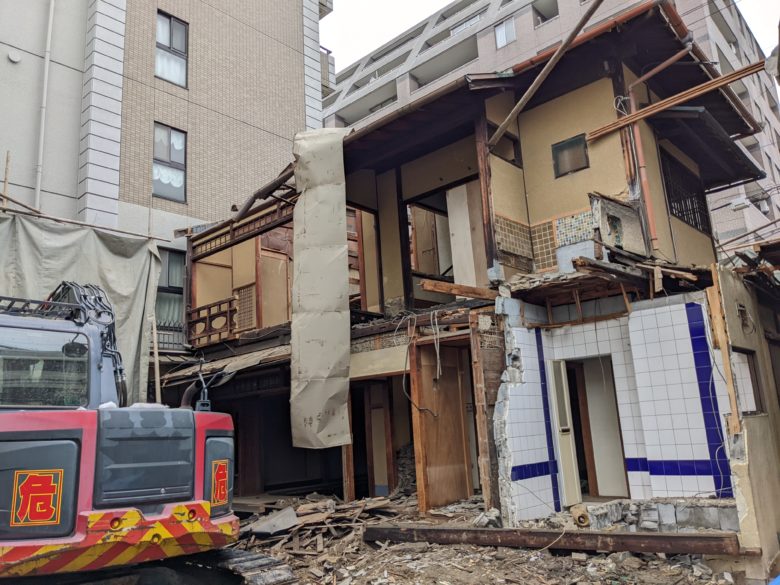 On the other hand, this is a demolition site I encountered in Kyoto.
On the other hand, this is a demolition site I encountered in Kyoto.
It was a beautiful machiya, but this is an unavoidable reality.
Montreal must be no different. Over there, from the window, I can see several groups of skyscrapers. Montreal, which is on the other side of the world from Japan, is not so different from Kyoto. Both ancient cities are constantly changing. The slow flow of time and the fast flow of time coexist in one city.
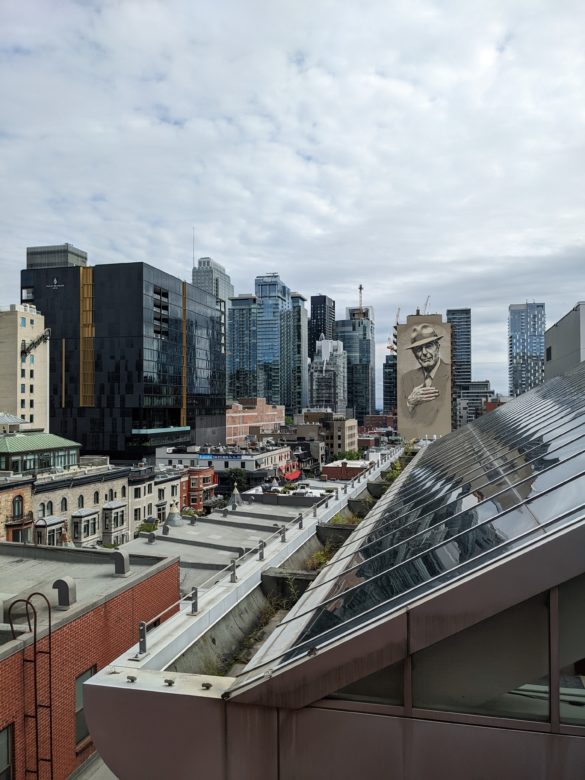
View of downtown from the Montreal Museum of Fine Arts.
Beyond the low-rise cityscape, an ever-increasing number of high-rise buildings stand.
To Start a Series
“Living” is different from “travelling.” We can find even small things and feel the changes at the same site for a whole year. I am a newbie in Montreal, but I am sure the city will change even in one year. Since I came to Montreal, I have often found myself getting curious about the city even though it is not related to my research. This curiosity makes me busy looking around so much that my neck hurts already. I decided to take on this series out of greed as I thought I should rather use the continuous neck pain to share my experiences with people. Let me say first that this series may sometimes lack context. I am still determining this series’ ending.
Spending time here in spring, summer, and fall, the image I have of this city has already changed drastically. The city of Montreal, although not so large, gives a very different impression depending on the season. Winter temperatures can reach minus 20 degrees Celsius, and summer temperatures can exceed 30 degrees Celsius. The difference of 50 degrees in temperature gives a sadistic sense of seasonality.
Spring in Montreal
In Japan, cherry blossoms in full bloom tell us about the arrival of spring. If we don’t see it, we cannot get into the mood for spring. One day, I found out that there was a place to see cherry blossoms in Montreal. Soon, I realized that this was a good season for it in Montreal. My family of three went on a picnic to the botanical garden, and had some rice balls. As I was enjoying my rice balls, I suddenly felt that this Japanese garden was somewhat ‘professional’. I decided to start this series with a story about this Japanese garden and Montreal’s urban history.
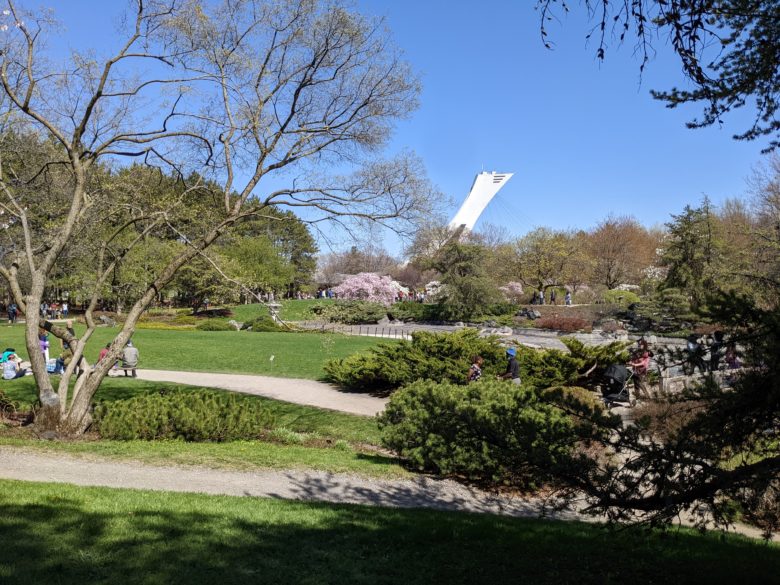
Montreal Botanical Garden, where I came to see the cherry blossoms.
Beyond the beautiful cherry blossoms was the tall tower of the Olympic Stadium.
*All photos were taken by the author unless otherwise noted.

